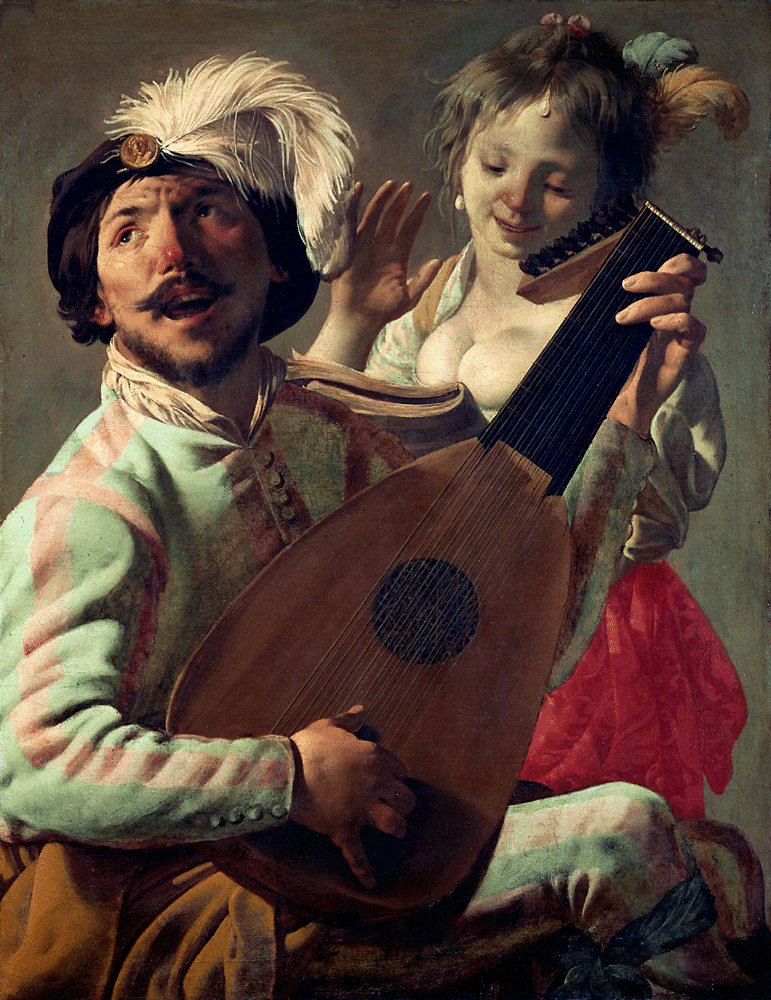
Duet
A duet is a musical composition for two performers in which the performers have equal importance to the piece, often a composition involving two singers or two pianists. It differs from a harmony, as the performers take turns performing a solo section rather than performing simultaneously. A piece performed by two pianists performing together on the same piano is a "piano duet" or "piano four hands".[1] A piece for two pianists performing together on separate pianos is a "piano duo".
"Duo (music)" redirects here. For a band or musical act featuring two members, see musical duo.History[edit]
When Mozart was young, he and his sister Marianne played a duet of his composition at a London concert in 1765. The four-hand, described as a duet, was in many of his compositions which included five sonatas; a set of variations, two performers and one instrument, and a sonata for two pianos. The first published sonata or duet was in 1777.[2]
In Renaissance music, a duet specifically intended as a teaching tool, to be performed by teacher and student, was called a bicinium (see Étude).
La clemenza di Tito by
Wolfgang Amadeus Mozart
La Cenerentola by
Gioachino Rossini
The Puritans of
Vincenzo Bellini
Don Pasquale by
Gaetano Donizetti
La traviata by
Giuseppe Verdi
Aida of
Giuseppe Verdi
Mefistofele of
Arrigo Boito
Manon Lescaut by
Giacomo Puccini
Madama Butterfly by
Giacomo Puccini
L'amico Fritz by
Pietro Mascagni
"" – Ricardo Montalbán and Esther Williams, and with roles reversed, Red Skelton and Betty Garrett, 1948
Baby, It's Cold Outside
, ed. (1911). "Duet" . Encyclopædia Britannica (11th ed.). Cambridge University Press.